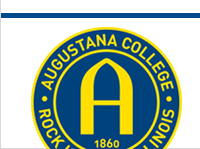Course
Molecular Genetics
Document Type
Video
Publication Date
Spring 3-10-2022
Description, Abstract, or Artist's Statement
Antibiotics and antimicrobials have been at the cornerstone of human medicine before we even understood what a cell was. Throughout history there are endless examples of medicines used that can be traced to something akin to what we know of today as an “antibiotic”. From the widespread use of “mouldy bread” as a “topical application” throughout many ancient civilizations to the “magic bullet” called “Salvarsan” discovered by Paul Erlich, generations throughout humanity have been looking to cure the diseases that, quite literally, plague us (1). After the discovery of penicillin by Alexander Fleming, the subsequent widespread discovery and production of antibiotics began at full force (1). Today, as we understand them, antibiotics are a staple to our medical industry. These miracle drugs do not come without cost, however. Much like how antibiotics were first naturally produced-- through competition on a molecular scale, the widespread use of antibiotics has put selective pressures on the pathogens that we are combatting today. These pressures are encouraging the growth of antibiotic resistant bacteria, many of which cause deadly nosocomial infections (2). These types of pathogenic bacteria are referred to as the ESKAPE pathogens, ESKAPE being an acronym for the most common species that exhibit antibiotic resistance (2). This is of great concern as the more antibiotic resistance which develops within the microbial world, the less effective (and possibly more dangerous) medical care becomes. Nosocomial infections, or infections contracted while in a hospital or hospital-like environment, are the bread and butter of these ESKAPE pathogens; many of which are easily transmissible and highly infectious to patients that are already susceptible to diseases. Today, the current strategies to combat these infections such as photodynamic light, metal nanoparticles, and antimicrobial peptides, are limited in success but give us hope towards paving a new era of medicinal treatment for these infectious diseases (3). While we are attempting to develop novel therapies not yet utilized, other projects are assisting in the discovery of antibiotics that can be effective against these bacteria (and others). TEPI, also known as the Tiny Earth Project Initiative, is an initiative in which researchers are coming together globally to search for new strains of bacteria (and antibiotics) while also cataloging soil microbial life (4). This project, combined with research on new fronts of medicine, can give us hope in the midst of this global antibiotic crisis that is afflicting society currently. In an effort to contribute to this fight, I and many others have worked together with Dr. Lori Scott in order to assist in the discovery and cataloging of antibiotic producing bacteria. This video essay is a cumulative capstone on my work for this project.
Augustana Digital Commons Citation
Devaney, Kerry and Scott, Dr. Lori. "The TEPI Project: Searching for Antibiotic Producers in the Soil" (2022). Identifying and Characterizing Novel Antibiotic Producing Microbes From the Soil.
https://digitalcommons.augustana.edu/biolmicro/12

Comments
Citations for both the abstract and the video will be uploaded separately as a .pdf file.